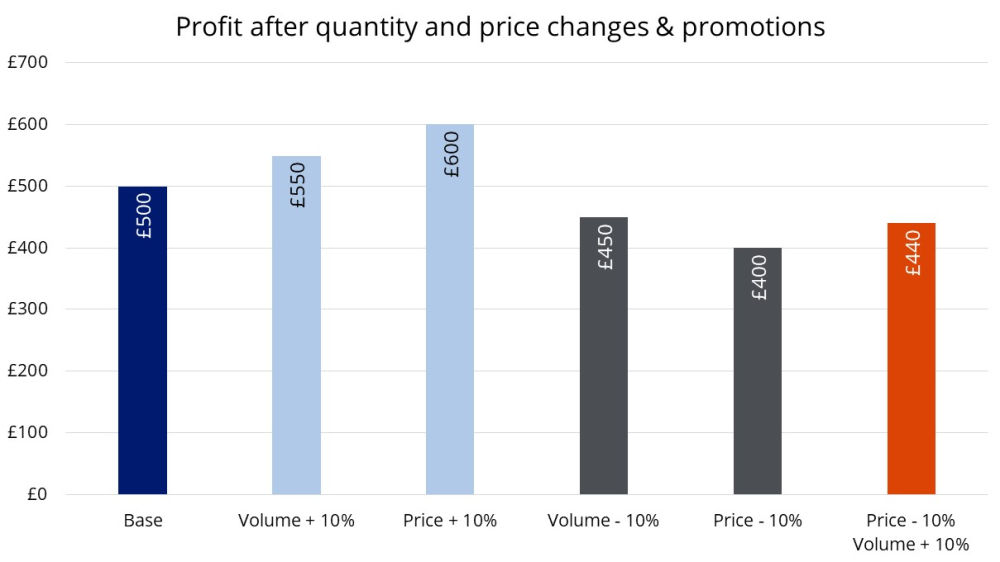Price affects profit more than quantity
Price, profit and quantity have a complicated relationship. If your marketing department works to any business metrics, they’re probably related to sales quantity. We’re always under pressure to sell more. If we sold 2,000 this month, we need to sell 2,500 next month.
Simple maths shows us that this is the wrong priority. If profit is our ultimate goal – and it should be – controlling your pricing is far more important than sales quantity.
Understanding our price, profit and quantity chart
Read this chart from left to right.
- The dark blue column “Base” assumes you make a £500 profit by selling 100 units at £5 profit each (you sell them for £10 and make them for £5).
- The light blue columns show that a 10% increase in sales quantity sees you selling 550 units instead of 500. You make £550 profit.
- But the second light blue column shows that a 10% increase in price sees you selling at £11 instead of £10. You make £600 profit. That’s done you twice as much good as increasing your sales quantity.
- The two grey columns show you it works in reverse too. If your price goes down 10% it hurts you twice as much as if you sales quantity went down 10%.
- But the orange column is the kicker. We often do sales promotions – discounts – to increase sales quantity. If profit is your goal, this kills you. If you increase sales quantity by 10% but have to reduce prices by 10% to get them, you lose profit.
This doesn’t mean you should never do price promotions.
It doesn’t mean you should never try to increase sales quantity.
It just means you should keep your eye on the right priorities. Be aware of the implications of your campaigns.
As Warren Buffet, Chairman & CEO of Berkshire Hathaway, says: “The single most important decision in evaluating a business is pricing power.” And if it’s good enough for the Sage of Omaha, it’s good enough for me.
If you download the attached spreadsheet you can put in numbers and create charts that are relevant to your business’ products/services.

